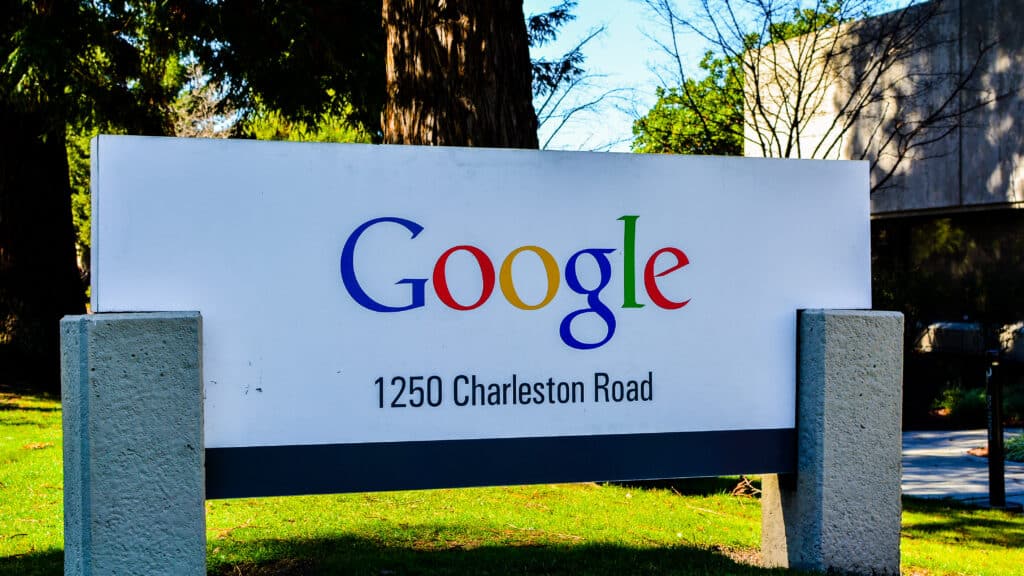
Key Points:
- Along with Larry Page, Sergey Brin created the Google Internet search engine.
- The two co-authored the white paper, “The Anatomy of a Large-Scale Hypertextual Web Search Engine,” which went viral and became the most viewed and downloaded scientific document online.
- Sergey Brin’s dorm room program, PageRank, developed into the algorithm that would make Google the most useful search engine in the world.
Who is Sergey Brin?
Sergey Brin is an American entrepreneur and computer scientist who, together with Larry Page, created Google, the most widely used Internet search engine and one of the most innovative technology companies ever built.
Early life
Sergey Brin (pronunciation: “sur·gay brin”) was born in Moscow in the former Soviet Union in 1973. At the age of six, Sergey and his family moved to the U.S., and he grew up in a house in Adelphi, Maryland.
His father, Michael, who taught mathematics in the University of Maryland, invested heavily in little Sergey’s education from a young age. As a boy, Sergey went to a Montessori school. After he graduated from high school, he attended the same university where his father worked as a professor. He graduated in only three years, at the age of 20, with honors in computer science and mathematics.
Brin received a graduate fellowship from the National Science Foundation, enabling him to continue his education at Stanford University. A prolific researcher, Brin authored or co-authored paper after paper on pattern extraction and data analysis at Stanford with names like “Scalable Techniques for Mining Casual Structures” and “Extracting Patterns and Relations from the World Wide Web.”
Besides his research, Brin also worked on applying what he learned, creating a rating website for movies and an HTML translation program for scientific papers. While at Stanford, he crossed paths with fellow student Larry Page, who had been researching ways to rank web pages. Page and Brin were both finishing their education with doctorates in computer science and soon discovered their interests were complementary. They decided to team up.
Career
BackRub
During Sergey Brin’s time at Stanford, the internet was just beginning to take its place as a major player on the international telecommunications stage. The primitive search facilities of the time ranked search results by how many times any given search term appeared on any given page. This method was easy for bad actors to game, and the results were often mostly irrelevant to the queries.
Larry Page thought he could improve on this system by coming up with a way to determine the number of external web pages linking to any page. He figured that its number of external links would be a good heuristic for how useful a page was. In order to realize this ambitious idea, he needed the help of an expert data miner like his classmate, Sergey Brin.
Brin and Page began researching the project together, starting by co-authoring two white papers, “Dynamic Data Mining: A New Architecture for Data with High Dimensionality” and “The Anatomy of a Large-Scale Hypertextual Web Search Engine.” The latter soon went viral, gathering more downloads and views than almost any other scientific document online.
Once their ideas were sufficiently organized, they built their first search engine prototype using Page’s collection of cheap personal computers. They named the prototype “BackRub” and the search algorithm at its core “PageRank.” Word soon got out that two students had put together a search engine that worked better than any other internet search technology of the time.
In 1997, Brin and Page registered Google.com as their official domain name. They derived the name from the word “googol,” an unofficial term for a very large number, specifically a one with 100 zeros behind it. To them, it represented the almost unimaginably large space of data their search engine would explore and classify.
In 1998, they officially incorporated Google as a private company. They moved their servers out of Page’s dorm to a much swankier location: a garage in a house belonging to one of their Stanford friends, Susan Wojcicki, who later became the CEO of YouTube. They decided that Larry Page would be Google’s CEO and Sergey Brin would be the company’s president. Instead of focusing on one specific piece of software, the official mission statement of the company was to “organize the world’s information and make it universally accessible and useful.”
The Google team quickly outgrew Wojcicki’s garage as well as a few other office locations. In 1999, they rented a building complex in Mountain View, California, to house the burgeoning company. Later, Google ended up buying the whole complex and its surrounding property to permanently house what they would call the “GooglePlex.”
Minimalists at heart, Brin and Page kept the Google home page sparse and focused on results. They were more interested in fast loading speeds than flashy graphics. In 2000, they began to monetize the search engine with keyword-based text-only ads. As some of the world’s first targeted marketing, ad space on a Google results page quickly became extremely valuable.
In 2001, the Dotcom bubble was beginning to burst. Many online startups that looked promising at first had gone bankrupt. Google was not one of them. Its profits were exploding, and its growth showed no signs of slowing down. Brin and Page brought a third executive, Eric Schmidt, on board to help them run the company. They named Schmidt the official Google CEO, while Page became its President of Products, and Brin became its President of Technology.
In 2004, the company went public. Its initial market worth was valued at $23 billion. At age 27, Sergey Brin found himself a multibillionaire. By 2006, Google employed more than 10,000 people with more than $10 billion in annual revenue. Fortune magazine named Google the world’s best company to work for in 2007 and 2008.
Besides developing their own products, Brin, Page and Schmidt began to expand Google by strategically acquiring other innovative software and even hardware companies. In 2006, they made headlines with the purchase of the internet’s top video site, YouTube. YouTube had been attracting lots of eyeballs but not making much money. The Google team named their former garage partner, Susan Wojcicki, as YouTube’s new CEO, and together they quickly turned it into one of their biggest moneymakers.
By 2009, Google services were available in 100 countries around the world. Brin began to worry about subjecting the search engine to the anti-liberal laws and filters imposed by governments in certain countries, among them China’s communist political party. In 2010, Brin convinced the other Google executives to abandon their offices in China rather than censoring search results. Many years later, after Brin left the company, Google tried to reestablish operations in China. To date, they haven’t had much success due to the communist political party’s continued censorship.

Google went public in 2004, with an
initial market worth valued at $23 billion.
©jejim/Shutterstock.com
Alphabet
In 2015, Brin and Page reorganized Google’s interests. They created a holding company named Alphabet Inc. and named Google its primary subsidiary. Sergey Brin became Alphabet’s first president. Larry Page became its CEO, and they named Eric Schmidt its executive chairman.
In late 2019, Brin and Page jointly announced they would be retiring from their official positions as Alphabet executives to pursue other interests. They named a fellow Stanford graduate, Sundar Pichai, to take their place as CEO of both Alphabet and Google.
In 2021, Sergey Brin and Larry Page still serve on Alphabet’s board of directors. They remain Alphabet’s largest stockholders and maintain controlling interests in Google. Google is the most visited site on the internet, with more than 3.5 billion searches every day and millions of servers to process them.
What Did Sergey Brin Invent?

PageRank
Sergey Brin’s dorm room program, PageRank, developed into the algorithm that would make Google the most useful search engine in the world. Today, it’s far too complex to describe in brief terms, but when Brin and Page first came up with it, it was much simpler.
PageRank began by evaluating not only the quantity but also the quality of any web page’s external links. A page with a lot of external resources linking back to it was considered to be more valuable than a page with fewer external links and therefore received a higher relative score. If the pages linking to it also had high scores, that page was considered even more important and authoritative, and its score got even higher.
Under the PageRank system, each link to your page was a vote for your page, but each vote had a different weight depending on the PageRank ranking of the site that cast it. This almost circular reasoning made the algorithm cycle through its page directory over and over again, continually updating its rankings.
Every time it ran through a cycle of calculations, its rankings would get better and more detailed. As the cycles continued, the rankings would tend to settle around some number and then stay in that vicinity, giving the algorithm its best estimate of a page’s final value. Brin also included a damping factor based on probability theory to keep certain highly popular pages from skewing the rankings too much.
Today’s Google ranking algorithm is a remastered version of the old PageRank program. Besides its now heavily polished rating system, it also reads a number of other proprietary signals that help influence its outcome.
Other Innovative Google Products and Services
Although he wasn’t personally responsible, the companies Brin contributed to have invented an uncountable number of crucial applications and services. Here are some of our favorites:
- Gmail
- Google Chrome
- Google Docs
- Google Translate
- Google Maps
- Android operating system
- Google Earth
- Google search toolbar
- Google Books
- Google Glass

Sergey Brin: Marriage, Divorce, Children and Personal Life
Net Worth
Most of Sergey Brin’s net worth comes from the about 6% aggregate stake he holds in Alphabet, Google’s parent company. Beginning in 2005, Brin, Page and Schmidt all decided to reduce their yearly salaries to one dollar per year with no bonuses. This has tied their net worth straight to the stock market performance of their companies. The latest estimates indicate that Brin and Page are among the world’s top 25 richest people.
First Marriage
In early 2007, Brin married YouTube CEO Susan Wojcicki’s sister, Anne Wojcicki, who had founded the consumer DNA testing website 23andMe. (The correct pronunciation of Wojcicki is “woh-JIS-key.”)
Divorce
Six years later, in 2013, Brin and his wife Anne announced that they’d been living separately ever since Brin had been involved in an affair with Amanda Rosenberg, the marketing director for Google Glass. Two years later, they filed for divorce.
Second Marriage
In 2018, Brin entered his second marriage, this time to Nicole Shanahan, a patent attorney and legal professor.
Children
Brin and his first wife, Anne Wojcicki, had two children. Their son, Benji, was born in 2008, and their daughter, Chloe, was born three years later.
In 2018, Brin had a daughter with his second wife. His third daughter’s name has not been made available to the public.
Tragedy
In her later years, Brin’s mother received a heartbreaking diagnosis of Parkinson’s disease. Further research uncovered that, like his mother, Brin also had the mutated gene that often leads to development of the disease. In 2014, Sergey and his first wife Anne jointly donated $53 million to the fight against Parkinson’s.
Sergey Brin: Awards and Achievements
Golden Plate Award
In 2004, Sergey Brin and Larry Page were dual recipients of the Golden Plate Award from the American Academy of Achievement.
Marconi Foundation Prize
That same year, they were also awarded the Marconi Foundation Prize, which many consider the highest award in engineering. They were also instated in Columbia University as Fellows of the Marconi Foundation.
Computer Pioneer Award
In 2018, Brin and Page received the Computer Pioneer Award from the IEEE Computer Society. This award is meant to acknowledge people who have made important contributions to developments and concepts that have undeniably advanced the field of electronic computing
Other Awards
Here are a few other prizes, rankings and honorary degrees that Sergey Brin has been awarded:
- In 2002, Brin and Page were ranked among the world’s top 100 innovators under the age of 35 by the MIT Technology Review.
- In 2003, they were recipients of the EY Entrepreneur of the Year Award.
- Also in 2003, they were both awarded honorary MBAs by IE Business School.
- In 2009, Forbes ranked the two together as the world’s fifth most powerful person.
- Also in 2009, the National Academy of Engineering inducted Brin as a member to honor his outstanding contributions to the research and practice of engineering.
- In 2018, Brin finally got his own Forbes ranking, making it onto the list as the world’s 35th most powerful person.
Sergey Brin: Published Works and Books
Academic Papers
Brin has authored or co-authored 25 academic papers, mostly while at Stanford and mostly on the subjects of internet search techniques and data retrieval and analysis. Some of the most popular of these include:
- Extracting Patterns and Relations from the World Wide Web
- Dynamic Data Mining: A New Architecture for Data with High Dimensionality
- Scalable Techniques for Mining Causal Structures
- Dynamic Itemset Counting and Implication Rules for Market Basket Data
- Beyond Market Baskets: Generalizing Association Rules to Correlations
Sergey Brin: Quotes
- “Knowledge is always good and certainly always better than ignorance.”
- “Too many rules stifle innovation.”